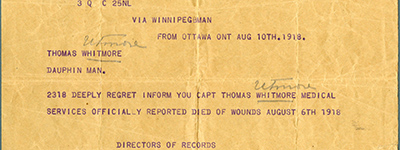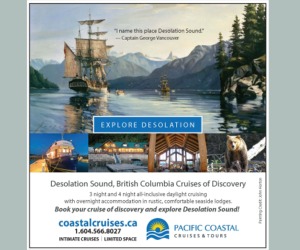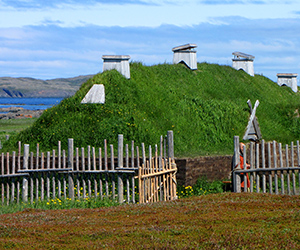CANADA HISTORY - Places-Settlements
Fort Langley

Fort Langley, established by the Hudson’s Bay Company (HBC) in 1827, played a crucial role in the development of British Columbia and in the fur trade economy of the Pacific Northwest. Located along the banks of the Fraser River, it served as a trading post where goods such as blankets, knives, hatchets, and rifles were exchanged with Indigenous peoples for furs, fruit, and salmon. Over 150 years later, the site has been restored by Parks Canada, preserving a replica of the original fort to showcase its historical significance. This essay delves into the origins of Fort Langley, its operations, its role in the colony’s formation, and its importance to Canadian history.
Origins of Fort Langley
Fort Langley was established during the early 19th century, at a time when the Hudson’s Bay Company was expanding its operations in the Pacific Northwest. The HBC was seeking to secure control over the fur trade in the region, particularly in response to competition from American traders and the declining beaver populations in other areas. To strengthen its position, the HBC began establishing a network of trading posts along major rivers and coastal areas, including Fort Vancouver (in present-day Washington State) and Fort Langley on the Fraser River.
Fort Langley was strategically chosen due to its proximity to the Fraser River, which provided easy access to both the interior of British Columbia and the Pacific Ocean. The fort became a vital link in the HBC’s trade network, connecting traders to the rich fur resources of the interior and the global markets via the Pacific.
Trading Operations at Fort Langley
At the heart of Fort Langley’s operations was its role as a fur trading post. The fort functioned as a center of commerce where Indigenous peoples, including the Sto-lo Nation and other Coast Salish groups, would bring furs to trade for European goods. The trade was mutually beneficial: Indigenous groups sought manufactured items such as blankets, iron tools, and firearms, while the HBC desired the high-quality furs that could be exported to Europe, particularly beaver pelts, which were highly valued for the making of felt hats.
In addition to furs, the fort’s trading economy was supplemented by the exchange of locally sourced goods such as fruit and salmon. The Fraser River, renowned for its salmon runs, provided a rich supply of fish that was smoked and preserved at the fort for trade and sustenance. The fort’s location on the river also facilitated transportation, allowing goods to be shipped to and from the interior of British Columbia and down the coast to HBC headquarters at Fort Vancouver or exported overseas.
Fort Langley was more than just a trading post; it was a self-sustaining community. The HBC employees and their families lived within the fort’s walls, growing crops, raising livestock, and engaging in skilled trades to support the fort’s operations. Blacksmithing, carpentry, and other essential trades were practiced at Fort Langley to ensure the fort remained operationally independent.
The Gold Rush and the Creation of British Columbia
Fort Langley’s importance grew dramatically in 1858 with the onset of the Fraser River Gold Rush. Gold was discovered along the banks of the Fraser River, and news of the find quickly spread, drawing thousands of prospectors from California, the United States, and around the world. Fort Langley became the gateway to the goldfields, with miners stopping at the fort to purchase supplies before venturing inland in search of fortune.
The influx of gold seekers created a potential threat to British control over the region. Governor James Douglas, recognizing the need to assert British authority and prevent American influence from encroaching on the area, declared the establishment of the Colony of British Columbia in 1858. Fort Langley became a political focal point during this period, serving as the location where Governor Douglas formally proclaimed British Columbia a Crown colony.
The gold rush not only transformed the economy of the region but also led to the rapid settlement of British Columbia. The fort’s role shifted from fur trading to provisioning miners and settlers, becoming a center for the local economy and infrastructure development.
The Fort and Its Facilities
Fort Langley was a well-equipped trading post, with various structures essential for maintaining a self-sufficient community. The reconstructed fort that stands today under Parks Canada’s stewardship provides a glimpse into the daily life of the 19th-century outpost. Among the key facilities within the fort are:
The Blacksmith Shop: Blacksmiths were vital to the fort’s operations, producing tools, nails, hinges, and repairing weapons and other metal goods. Their work supported the fur trade and the agricultural activities within the fort.
The Trading Post: This was the economic heart of the fort, where goods were exchanged with Indigenous traders and miners. The trading post contained European goods that were highly sought after, including blankets, firearms, and tools.
The Fort Residence: The residence housed the fort’s employees, traders, and their families. Living quarters were basic but functional, providing a space for rest and social activities after long workdays.
Storage Buildings: These buildings held supplies such as food, trade goods, and materials needed to maintain the fort and support its operations.
The fort’s design, with its defensive wooden palisade and bastions, was intended to protect against potential attacks, though Fort Langley saw little in the way of conflict. Its peaceful relations with the surrounding Indigenous groups and its strategic location contributed to its long-term success as a fur trading post and community hub.
Decline and Preservation
By the late 19th century, the decline of the fur trade and the shift in economic activity toward gold mining and agriculture diminished the importance of Fort Langley. The fort was gradually abandoned, and the settlement of Langley began to grow around it. As British Columbia’s economy diversified and developed, the role of fur trading posts like Fort Langley faded into the background of the province’s rapidly industrializing society.
However, the historical significance of Fort Langley was not forgotten. In the 20th century, efforts were made to preserve the fort’s legacy, and in 1923, Fort Langley was designated a National Historic Site of Canada. Parks Canada undertook the restoration of the fort, rebuilding it as a replica of the original settlement. Today, visitors to Fort Langley can experience a recreation of the original fort and learn about the vital role it played in the development of British Columbia.
Importance to Canada
Fort Langley is an enduring symbol of the early interactions between European settlers and Indigenous peoples in the Pacific Northwest. It represents the pivotal role of the fur trade in the development of Canada’s western territories and highlights the complex relationships that shaped the region’s history. The fort also serves as a reminder of British Columbia’s formation as a colony and its path toward joining the Canadian Confederation.
As a National Historic Site, Fort Langley provides a space for Canadians and visitors to explore the early history of British Columbia and the dynamic cultural exchanges that occurred along the Fraser River. Its exhibits, interpretive programs, and educational displays preserve the stories of the traders, Indigenous groups, and settlers who shaped the fort’s history.
Fort Langley, established by the Hudson’s Bay Company over 150 years ago, remains an integral part of British Columbia’s heritage. As a fur trading post, it facilitated the exchange of goods between European settlers and Indigenous peoples, while its strategic location along the Fraser River made it a key hub in the region. The fort’s role during the Fraser River Gold Rush and its connection to the creation of British Columbia as a colony further solidified its place in Canadian history. Today, Fort Langley stands as a testament to the early frontier life in the Pacific Northwest, preserved by Parks Canada as a symbol of Canada’s rich historical legacy.
Cite Article : Reference: www.canadahistory.com/sections/documents/documents.html
Source: NA



